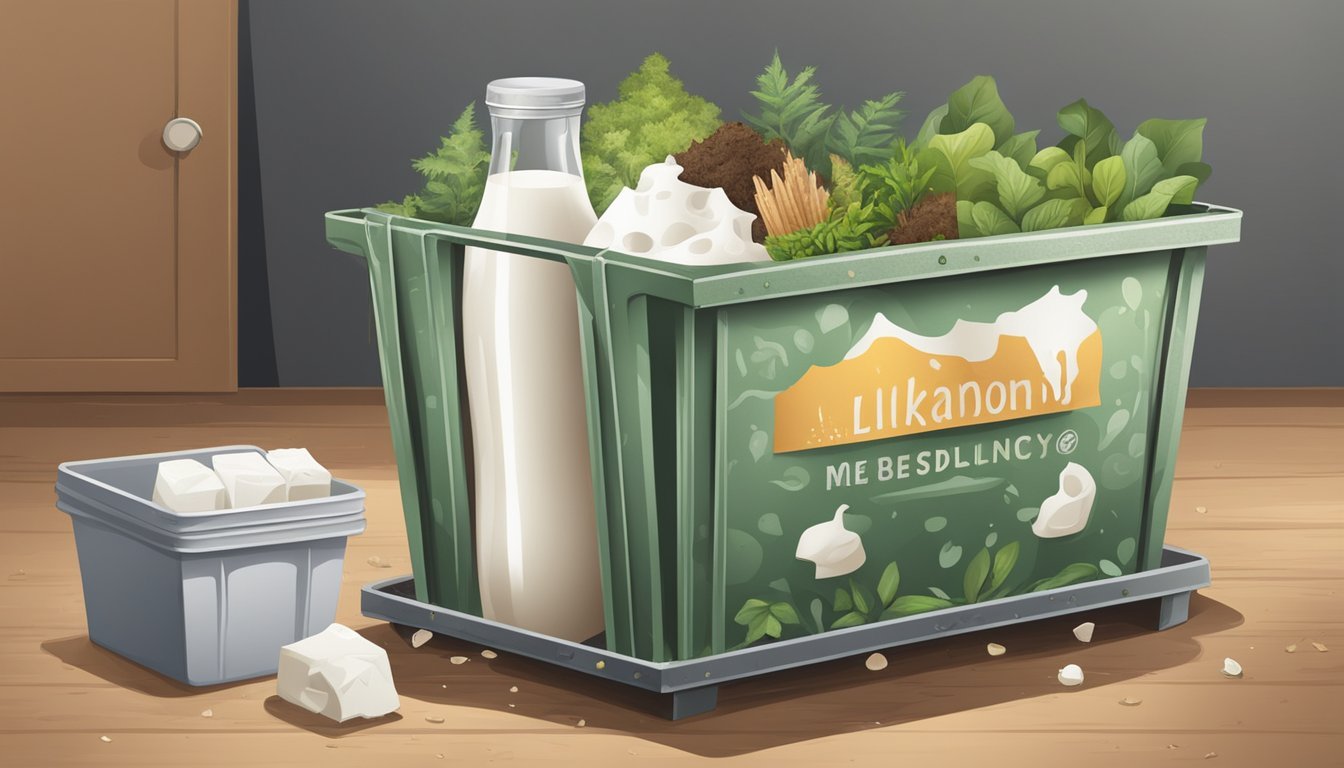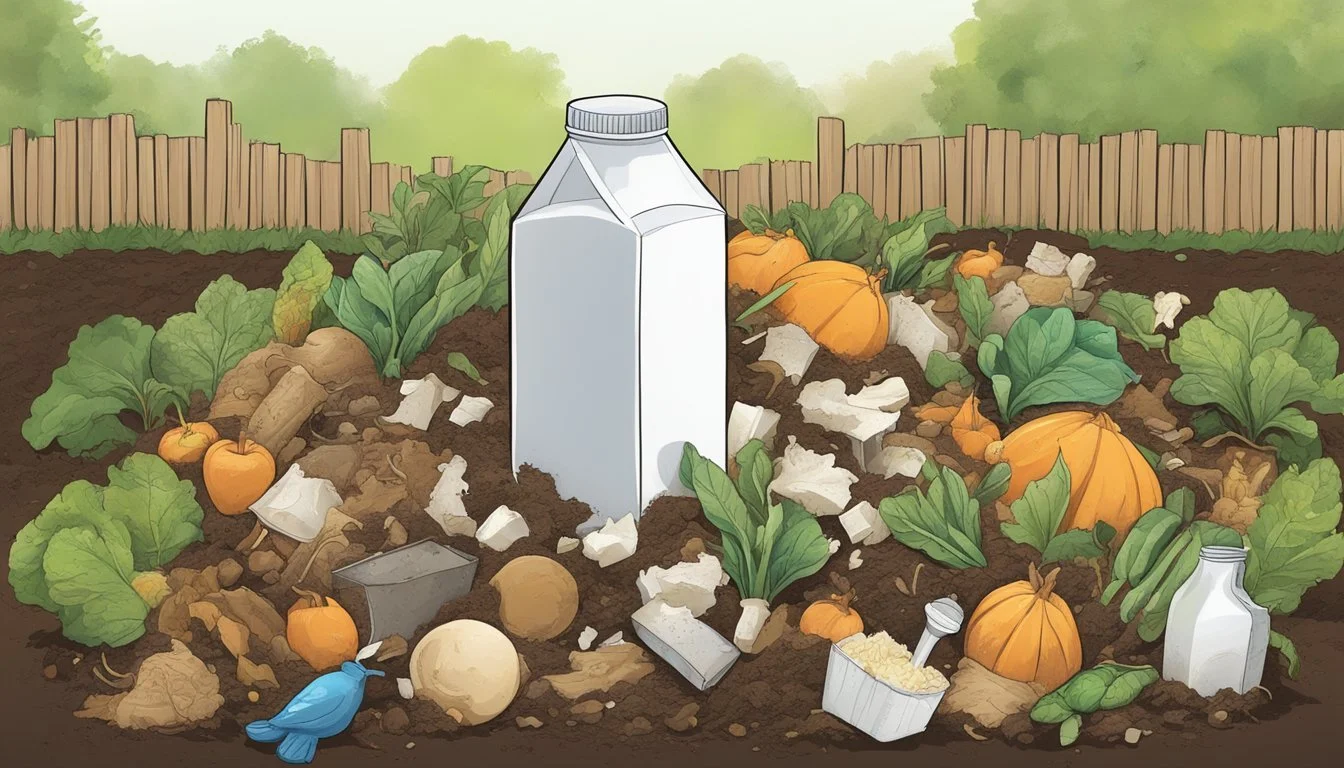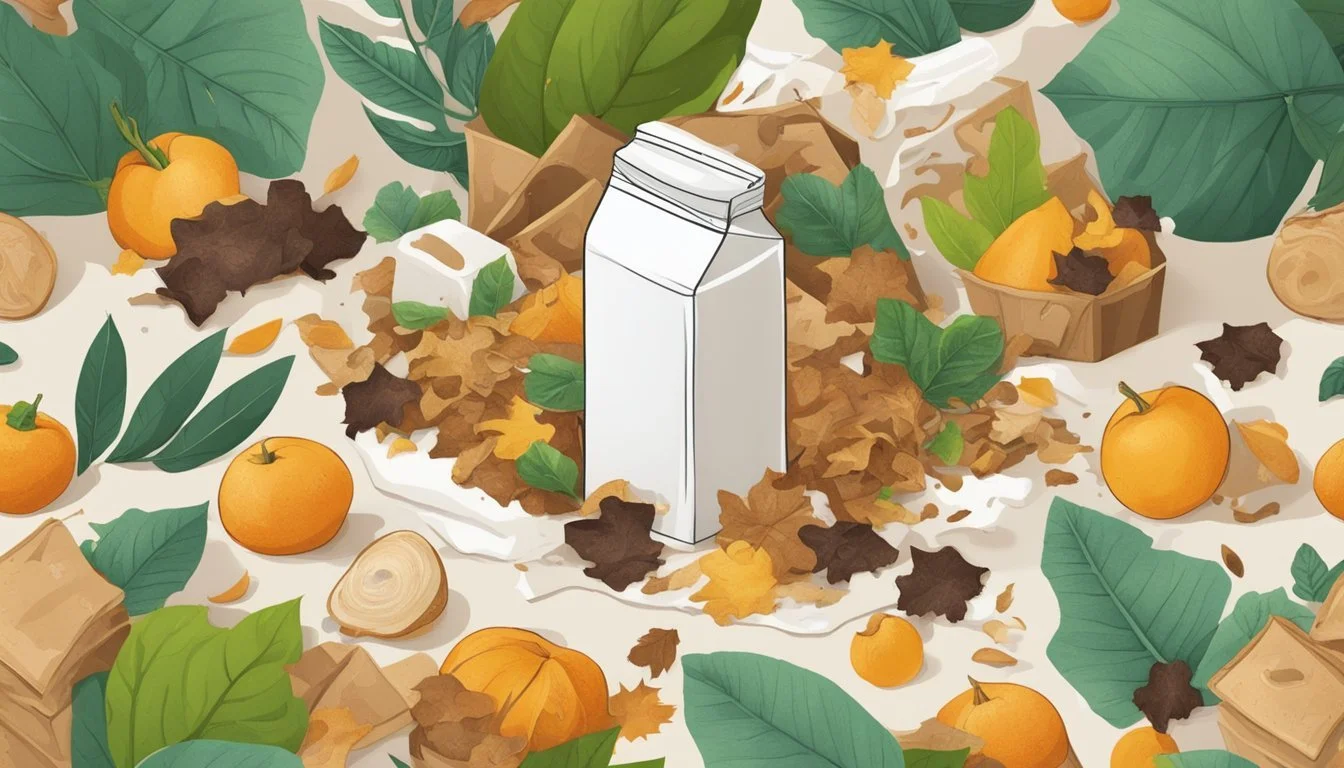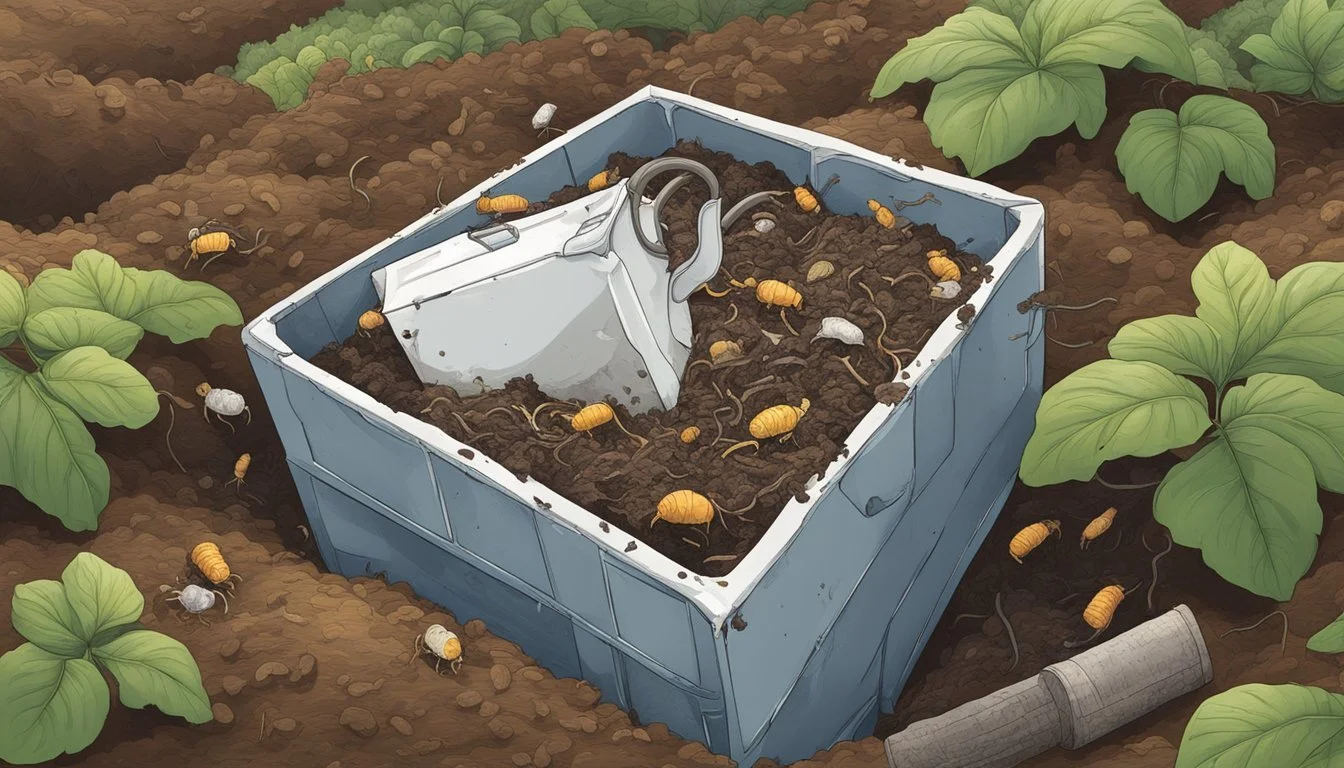Can You Compost Milk Cartons?
Unveiling the Truth About Dairy Packaging Recycling
Milk cartons are a staple in many households, but their disposal presents an environmental dilemma. With growing interest in sustainable practices, the question of whether milk cartons can be composted is increasingly relevant. Composting, a process of turning organic waste into nutrient-rich soil, is an excellent way to reduce landfill waste and contribute to soil health. However, the unique composition of milk cartons, which are primarily made of paper with a thin plastic or aluminum lining to preserve freshness, complicates their suitability for composting.
While the paper component of milk cartons is biodegradable, the plastic or aluminum lining is not typically compostable in a home setting. The breakdown of these materials requires specific conditions that are not easily achieved in a standard compost heap. For milk cartons to be suitable for composting, the plastic lining needs to be removed, which can be a labor-intensive process. This means that although it's technically possible to compost the paper portion, the effort involved and the potential for contamination often make it impractical.
On the other hand, recycling milk cartons is a viable alternative to composting and can be more environmentally friendly when facilities exist. Recycling transforms the paper and lined materials into new paper products, conserving resources and reducing the need for virgin materials. The recyclability of milk cartons can vary by region, so it is essential to check with local recycling guidelines to ensure proper disposal. In conclusion, while composting milk cartons is not straightforward, recycling offers a clear path to sustainability for these common household items.
Composting Basics
Composting is a natural process involving the decomposition of organic waste, which results in a nutrient-rich soil amendment. This section underscores the principles of composting, its environmental benefits, and the essential elements that comprise compost.
Understanding Compost
Compost is the end product of the decomposition of organic material by microorganisms under controlled conditions. It requires a balance of nitrogen-rich materials, or 'greens,' which include items like fruit and vegetable scraps, and carbon-rich materials, or 'browns,' such as leaves and twigs. Adequate moisture and aeration are crucial for microorganisms to thrive and break down the matter into humus.
Benefits of Composting
Composting offers several key benefits. It enriches the soil, helping retain moisture and suppress plant diseases and pests. By facilitating the slow release of nutrients, compost can reduce the need for chemical fertilizers. Additionally, composting reduces methane emissions from landfills and lowers your carbon footprint.
Compost Composition
To create compost, one must understand the composition that fosters decay.
Element Purpose Examples Carbon (Browns) Provides energy for microorganisms Leaves, branches, paper, cardboard Nitrogen (Greens) Produces proteins that build the microbe population Grass clippings, fruit waste, coffee grounds Moisture Essential for microbial activity Water, juice from fruit and veggie waste Air Ensures aerobic decomposition Turning the compost pile
The ratio of carbon to nitrogen materials should be approximately 30:1 for optimal results. Regularly turning the compost ensures even decomposition and prevents odor.
Milk Cartons and the Environment
Milk cartons are a common item in waste management and sustainability discussions due to their impact on landfills and recycling systems. Understanding the various types of cartons and their environmental implications is essential.
Types of Cartons
Milk cartons generally fall into two categories: refrigerated and shelf-stable. Refrigerated cartons are predominantly paper-based with a thin plastic lining, while shelf-stable cartons, designed for longer shelf life, frequently incorporate a layer of aluminum with the plastic and paper, making them more challenging to recycle.
Refrigerated Cartons: Primarily composed of paper with a plastic coating.
Shelf-Stable Cartons: Paper, plastic, and aluminum layered construction.
Environmental Impact of Cartons
The environmental impact of milk cartons revolves around their recyclability and decomposition. While paper products are typically seen as more eco-friendly due to their biodegradability, the plastic and aluminum layers in milk cartons complicate the process.
Recycling: Proper recycling of milk cartons can divert waste from landfills; however, the process is complex due to the multi-material composition.
Decomposition: In a landfill, the decomposition of milk cartons can take up to five years, sometimes longer, depending on the layers of plastic and aluminum.
Sustainability: Efficient waste management practices for milk cartons are critical to minimizing environmental impact and promoting sustainability.
Milk Carton Composition
The constitution of a milk carton significantly affects its recyclability and compostability. Understanding the materials and structure is essential for proper disposal.
Materials Used in Cartons
Milk cartons are primarily made from paper. Specifically, this paper is often a high-grade cardboard suitable for holding liquids. The paper content in milk cartons usually ranges between 70-80%, providing structural firmness.
Coatings and Laminations
To make the cardboard water-resistant, coatings and laminations are applied. Typically, milk cartons are lined with polyethylene (a type of plastic), or, less commonly, a thin layer of aluminum. These materials prevent the cardboard from becoming soggy and disintegrating when in contact with liquids.
Carton Structure
The structure of a milk carton is designed to be sturdy while keeping the contents safe for consumption. Generally, milk cartons consist of a coated paper product that can have multiple layers including plastic and sometimes aluminum (in shelf-stable cartons). The presence of plastic coating or polyethylene terephthalate in the carton's structure is crucial for maintaining the product's integrity but complicates composting and recycling processes.
Recycling Milk Cartons
Milk cartons are a common item in recycling programs, and understanding their recyclability is crucial for proper waste management.
Recycling Process
Milk cartons come in two main types: gable-top cartons made from paper and coated with plastic, and aseptic cartons which include layers of paper, plastic, and aluminum. To recycle these materials, they must first be collected in recycling bins and then transported to facilities where they undergo a paper recycling process. The facilities separate the paper fiber from the other materials using a process called hydropulping. Once separated, the paper fibers can be used to create new paper products.
Gable-top cartons: Typically recyclable in standard municipal recycling programs.
Aseptic "Tetra Pak" cartons: Require specialized facilities due to their complex layering, and not all communities have these facilities.
Recyclable versus Compostable
The terms recyclable and compostable are often confused but refer to different processes:
Recyclable items can be processed and reused. Milk cartons, both gable-top and aseptic, fall into this category because they can be broken down and turned into new products.
Compostable items, on the other hand, can biodegrade and become part of the soil. While some milk cartons, particularly those that are 100% paper, may be considered compostable, the presence of plastic and aluminum in most cartons makes them unsuitable for traditional or industrial composting.
In summary, most milk cartons can be recycled provided that the local recycling programs accept them. Consumers should check with their local waste management authorities to confirm.
Milk Carton Compostability
Milk cartons often pose a dilemma for composting enthusiasts due to their composite materials. Understanding the nuances of their compostability is crucial for an effective composting strategy.
Composting Milk Cartons
Milk cartons are typically made from a blend of paper and plastic, and in some cases aluminum, which are materials that respond differently to the composting process. The paper part is biodegradable and can contribute to a compost pile by adding carbon-rich material. However, the thin layer of plastic or aluminum, designed to preserve the freshness and prevent leakage, is not biodegradable. Composting milk cartons requires additional steps to separate these layers.
Shelf-stable cartons (such as those used for juice or aseptic packaging) generally contain a layer of aluminum and should not be placed in a compost bin.
Regular milk cartons largely consist of paper but the plastic lining must be considered. Some industrial composting facilities have the capability to process these cartons, whereas home compost piles usually do not.
Composting Challenges
Composting milk cartons at home can introduce several challenges:
Decomposition Time: The paper component of milk cartons will decompose, but the thin plastic layer can significantly prolong the overall process. Aseptic cartons with aluminum are even more problematic.
Contamination Risk: The remnants of milk and moisture or fat content in the carton can attract pests and lead to contamination of the compost.
Material Separation: To properly compost milk cartons, one must remove the plastic or aluminum lining, which can be time-consuming and is often impractical for most individuals.
In summary, while the paper portion of milk cartons is compostable, the presence of plastic or aluminum makes the process complex and less feasible for typical home composting practices. Sending milk cartons to industrial composting facilities that can handle such materials may be a better option to avoid contamination and inefficiency in personal compost bins.
Alternatives to Composting
When composting milk cartons is not a viable option, exploring alternatives is crucial to promote sustainability and minimize environmental impact. These alternatives include creative upcycling, leveraging industrial recycling solutions, and looking forward to bioplastic innovations.
Upcycling and Reuse
Individuals can demonstrate their commitment to the environment by upcycling milk cartons for various purposes. These cartons can be creatively reused as planters, organizers, or craft materials in educational settings. Upcycling not only extends the life of the material but also reduces the need for new resources, aligning with sustainability principles.
Industrial Solutions
Industrial recycling programs are designed to handle materials like milk cartons that are difficult to compost. These programs use specialized processes to separate the plastic and paper components for recycling. By utilizing these services, consumers ensure that the materials are managed effectively, contributing to a more environmentally-friendly approach.
Bioplastics and Innovations
The emergence of bioplastics offers a promising alternative to traditional packaging materials. These innovatively designed materials are often more environmentally-friendly and can be engineered to be compostable under the right conditions. The adoption of milk cartons made from bioplastics supports sustainability initiatives and can potentially revolutionize the packaging industry.
Best Practices for Disposal
When disposing of milk cartons, individuals should aim for environmentally friendly methods that adhere to local recycling and composting regulations.
Responsible Disposal
Composting: Milk cartons made entirely from cardboard can be composted if they are clean and free of plastic or metal linings. Before adding to a compost bin, the carton should be:
Shredded or torn into small pieces to expedite decomposition.
Ensured that it's free of food waste and rinsed thoroughly.
Recycling: Some milk cartons may have a plastic coating or an aluminum lining, making them challenging to compost. If recycling is chosen:
Check if local facilities accept these cartons.
Rinse and dry cartons to remove any residue.
Community Guidelines
Every locality can have specific guidelines on waste disposal. Residents should:
Consult their community's waste management rules regarding milk cartons.
Follow the community's sorting system, placing cartons in the correct bins.
Utilize designated recycling centers or community composting programs, if available.
Incorporating dry leaves or other brown compostable materials can balance compost bins and support proper decomposition when adding milk cartons to the mix.
Additional Considerations
When considering the composting of milk cartons, one must pay attention to health and safety implications, as well as legal and regulatory factors that dictate proper disposal practices.
Health and Safety
The composting of milk cartons involves the prevention of pathogens and pests. While cartons can hold food scraps, they often contain a thin plastic or aluminum lining that is not biodegradable and can be toxic if decomposed improperly. Humans should ensure that these materials do not end up in compost that will contact edible plants. Also, the fat content in residue milk can attract pests to compost bins, potentially causing a health hazard.
Legal and Regulatory Factors
Various laws govern the recycling and composting of materials. Individuals must acquaint themselves with local regulations regarding composting as non-compliance might lead to legal issues. For instance, certain jurisdictions may classify the plastic in milk cartons as recyclable, but not compostable, requiring them to be processed separately from organic food scraps and other compostable items.
Conclusion
The recyclability of milk cartons positions them as a preferable choice in sustainable practices. Being made from a high percentage of paper, milk cartons are primarily recyclable and represent a valuable component in the paper recycling stream. When it comes to composting, however, the incorporation of plastic or aluminum in the carton's construction presents complications. The thin layer, designed to preserve freshness, is resistant to quick decomposition, rendering the cartons less suitable for traditional composting methods.
It is important to distinguish between the different types of cartons: those intended for refrigerator storage and shelf-stable variants. Refrigerator cartons might decompose over extended periods in industrial composting facilities, while shelf-stable cartons, with aluminum coatings, are not compostable due to the non-biodegradable materials.
For individuals seeking to lead environmentally conscious lifestyles, it is recommended to:
Recycle: Take advantage of local recycling programs for milk cartons.
Compost with caution: If composting, one should remove any plastic spouts or liners and acknowledge that the process will be slow.
Check locally: As composting and recycling capabilities vary by region, residents should consult their municipal guidelines.
Ultimately, milk cartons can play a role in reducing waste through careful disposal. Whether opting for recycling or composting, consumers contribute to sustainable efforts that benefit the environment.







